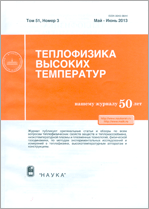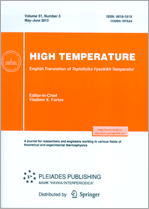|
This article is cited in 8 scientific papers (total in 8 papers)
Plasma Investigations
Characteristics of the development of electric discharge between the jet electrolyte cathode and the metal anode at atmospheric pressure
A. I. Popov, V. I. Novikov, M. M. Radkevich
Peter the Great St. Petersburg Polytechnic University
Abstract:
The article presents the results of an experimental study of the electrical discharge between a jet electrolyte cathode and a metal anode in electrolysis and plasma-electrolyte modes at atmospheric pressure. The current-voltage discharge characteristics in the treatment of M1 copper and AISI 304 stainless-steel specimens have been studied with a hollow current lead with an electrolyte feeding rate of $w = 3.34$–$13.36$ m/s within the voltage range of $20$–$565$ V. The patterns of discharge development have been demonstrated in electrolysis mode in the form of a hemisphere and in the electrolyte plasma mode in the form of cyclically repeating shapes: drop, cylinder, cones, ellipsoid, spheres, and superimposed shapes. The discharge characteristics for rotation, destruction, localization, electric breakdowns, and glowing are determined. The condition of the existence of the ellipsoid electrolyte-plasma discharge is described. The characteristics of discharge development have been registered at an interelectrode spacing of $2$–$8$ mm in the stationary mode and with its movement relative to the metal anode surface. The influence of the discharge shape on the noise level, specimen mass, and surface roughness is considered.
Received: 27.08.2018
Revised: 02.10.2018
Accepted: 10.10.2018
Citation:
A. I. Popov, V. I. Novikov, M. M. Radkevich, “Characteristics of the development of electric discharge between the jet electrolyte cathode and the metal anode at atmospheric pressure”, TVT, 57:4 (2019), 483–495; High Temperature, 57:4 (2019), 447–458
Linking options:
https://www.mathnet.ru/eng/tvt11105 https://www.mathnet.ru/eng/tvt/v57/i4/p483
|


| Statistics & downloads: |
| Abstract page: | 314 | | Full-text PDF : | 177 | | References: | 32 |
|





 Contact us:
Contact us: Terms of Use
Terms of Use
 Registration to the website
Registration to the website Logotypes
Logotypes







 Citation in format
Citation in format 
